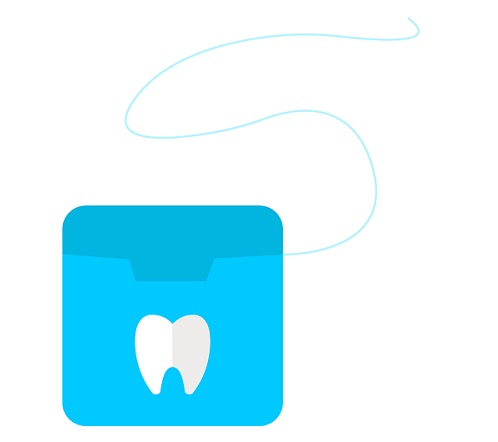Your mouth is a window to your overall health. Poor oral hygiene results in bacteria accumulation, that in turn leads to the formation of plaque & inflamed gums, which is detrimental for not only your oral health but to the overall health of your body. Researchers have linked periodontal disease with heart and kidney diseases, as well as diabetes. Leftover food particles in the mouth get trapped in small crevices of the gums. and bacteria in your mouth produce substances that irritate the gums, causing inflammation. That inflammation gradually breaks down the surrounding bone and tissues, which can eventually lead to tooth mobility.

Why should you floss?
There are areas in your mouth that you can not properly see and your toothbrush can’t reach, like teeth at the back or spaces between the teeth. This makes proper & thorough cleaning difficult. Flossing helps greatly in eliminating bad breath and bleeding gums by getting rid of food particles and plaque deposits that are chiefly responsible for it. Plaque, which is a biofilm containing bacteria, produces acids that demineralize enamel (outer layer of a tooth) which weakens the tooth structure. Continuous demineralization of the tooth structure results in tooth decay.
Does flossing cause gums to bleed?
Contrary to the common misconception that flossing causes gums to bleed or causes gaps between the teeth, flossing clears out any leftover food particles and plaque. With regular brushing, mouthwash, and flossing, meticulous oral hygiene can be easily maintained. This will halt the oral disease at its very first step, eliminating plaque, which will prevent any further need of dental procedures like fillings, root canal treatment, or event tooth extraction that will otherwise be needed in the absence of proper oral care maintenance. If flossing is not a part of your daily oral care regime or if you have not been consistently flossing in the past, there is no time like the present to make it a habit for better oral hygiene & health. If you wear braces or have a dental crown or bridge, in some areas where maneuvering with a brush might prove difficult, like under the wire of braces or beneath the crown, flossing is a very helpful tool in these cases as well.
How to floss properly?
Take about 18 inches of floss and wind it around the middle finger of one hand, and a small amount onto the index finger of the other hand. For easy maneuvering, keep around 2 inches of floss taut between the fingers, using index fingers for guiding floss between contacts of the lower teeth. Use thumbs to direct floss between upper teeth. Use gentle, zig-zag motion between the teeth. Make a C shape with the floss around the side of the tooth.
Which surfaces should you floss?